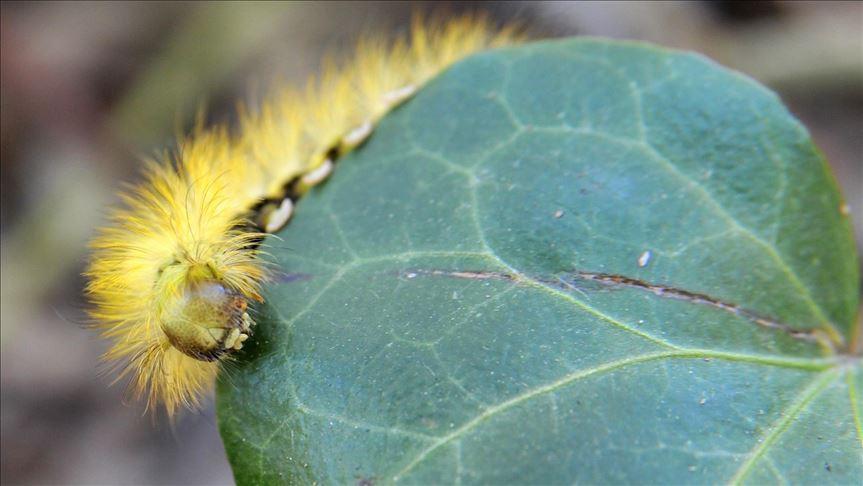Turkey combats caterpillars feeding on beech in west
BURSA

Turkey initiated efforts to combat red tail caterpillars that emerged in a forest area in the west, according to a regional forest director on Sept. 27.
The caterpillar -- which feed on beech leaves -- seen in a forest area between Bursa and Kütahya provinces and emerged due to climate change, Yalcin Akın, forest director in Bursa province, told Anadolu Agency.
Also known as pale tussock caterpillar, it was seen last year for the first time in a 40-50-hectare (99-124-acre) field, he said.
"We do not use chemical pesticides, it is strictly forbidden in our forests," he said, adding that they fight against the harmful insects with biological pesticides.
"We prefer fighting against the harmful insects with the living creatures feeding on them," he noted.
He added that the caterpillar might be seen in other regions next year due to climate change.
"This is a natural phenomenon that totally depends on the climate change, humidity and temperature balance in the location," Akın said.
Noting that they are working with the Uludag University in Bursa, Akin added: "We have also started to combat the caterpillar in this area with a bacteria called 'bacillus'."
He said the pest control in the area was done both from land and air, while the university professors were working in laboratory to identify the predator of the caterpillars.
"We will produce and release them to the nature in order to balance the caterpillar population in the region," he added.
As a third method, they also destroy the caterpillar’s eggs on the trees and collect the pupa -- in which the caterpillar spends the winter -- from the surface of the soil, Akın said.
"Hopefully, we will have much better results here next June with these three strategies we have adopted," he said.
Akın added that the caterpillar is seen in a 200-250-hectare (494-618-acre) area, and added that they are planning to take their population and spread under control.
















